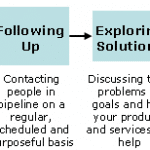Celeste got strong directions from her doctor last week: “I really want you to make some lifestyle changes – or you’ll have to start medication.”
After checking into alternatives, she’s decided that she wants to find an organized program to help her make changes.
But which one? The program at a local health club, one offered by a hospital, or a program offered by a wellness center?
Your competitive comparison checklist is the tool that helps her decide.
Here’s how to create a competitive checklist for your health and wellness business, followed by a real-world checklist example:
1) Identify your top competitors
Identify the top three to five likeliest, most realistic competitors to your service, product or program.
For example, is Bally (very low rates, high sales pressure, “meat market” image) really a likely competitor for Life Time Fitness (family-oriented, less sales pressure, much higher rates)? Or is the YMCA a more realistic competitor? How about Curves? How about buying a do-it-yourself weight-loss book or joining a healthy lifestyles program at church, or at the local hospital-affiliated wellness center?
And if you have a multidisciplinary program that addresses, say, exercise, nutrition and stress, then your competitors may primarily just focus on one of those elements. That’s okay. Go ahead and include them – as long as they really are your likeliest, most realistic competitors.
2) Identify key differentiators
Differentiators are the elements that distinguish competitors from each other. Put another way, they’re the competitive advantages possessed by each business.
As you’re identifying differentiators or competitive advantages for your wellness business, consider all of the following categories:
Best-suited for
Examples: highly-motivated people who like to set their own goals, friendly people who like to be part of a group, folks with flexible schedules, people who are concerned about safety, people who like to know “why” in addition to “how” or “what”, those who have tried everything, and so on
Your wellness approach or philosophy
Examples: self-care, medically-based, evidence-based, alternative, a blend of conventional medicine and Eastern philosophy, less is more, “give your all”, you can always do better
Style or temperament
Examples: non-competitive, competitive, medically-oriented, integrative, formal, casual learning environment, high-energy, measurable results, supportive, laidback
Customer service
Examples: Open 24 hours, online renewal, credit cards, auto bank draft, friendly people, ample parking, accessible location, evening appointments, cancel anytime
Programs, services, products
Examples: race training groups, one-on-one weight loss program, personalized diabetes health coaching, warm water therapy pool, peer support, confidential health risk assessment, Silver Sneakers group fitness, supplements, family memberships, telephone/email coaching
Nature of program
Examples: structured group program with weekly goals, individualized program that’s different for everyone, jumpstart-style program, “booster” or restart-style program, do-it-yourself
Variety, including different program levels or sequences
Examples: Beginner vs advanced, hatha, kundalini, power and hot yoga, selectorized and free weights, 30 different seminars, 40 different instructors
Duration
Examples: 12-month program, one-time class, 30-day membership
Quantity
Examples: 100+ cardio stations, 30000 square-foot fitness floor, 30 sessions available every week
Know-how
Examples: specific life & professional experience, credentials, philosophical and spiritual perspectives, certified trainers, licensed therapists
Quality
Examples: Typical client comments. Also: no frills, sparkling clean, medically-based, ELG 25-mph high-speed treadmills, sustainably-harvested hardwood floors, board-certified
Risk
Examples: guarantee, 7-day membership, 30-day trial, free intro class, full refund, BBB membership, Angies List reports
Price
Examples: specific price ($49/month), price range ($125 – $250), starting price ($99 and up), or visual indicators: $, $$, $$$
Do:
- Name names, if your competitors are obvious and well-known. If the competition is diffuse and fragmented, just give the general category (“Diet Books”) with a few examples (“like South Beach Diet or The Mediterranean Diet”).
- Be picky. Include only the elements that truly set your business apart from competitors.
- Stay objective. Customers won’t bother to talk to your competitors if they feel like you’ve done their homework for them.
- Compare prices, especially if it’s to your advantage. Your options include using: actual prices ($125/visit). Or use a range ($45 – 65/month or $99 and up) to avoid unnecessary sticker shock and reduce the need for frequent updates as prices change. Another option: a visual comparison, as we did in the sample checklist below.
Don’t:
- Make your list exhaustive. Pick just the items that matter most to potential clients. Save the full feature list for your service description.
- Skew it relentlessly in favor of your product. A self-serving comparison throws your integrity into question. Plus, you want to those customers who’ll stick around for the long term.
- Choose a ridiculous “straw man” as one of your competitive alternatives – an option that almost no one finds appealing. Subsisting entirely on apples and walnuts is certainly an alternative, but it’s not one most people seriously consider.
3) Create your final chart
Once you’ve completed a draft comparison chart, distill it down to 2 – 3 competitors in addition to your business – so four total.
And distill the number of comparative features down to no more than 5 – 7 really critical differentiators.
Is it hard to tell which differentiators matter most? Go back to your customer feedback and let it be your guide.




